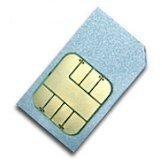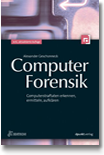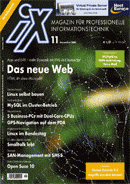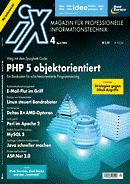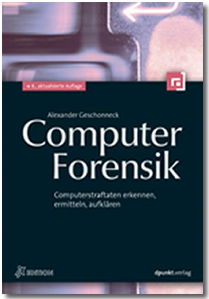Einleitung
Wer sollte dieses Buch lesen? . . . . . . . . . . . . . . . . . . . . . . . . . . . . . 2
Was lernt man in diesem Buch? . . . . . . . . . . . . . . . . . . . . . . . . . . . 4
Was lernt man in diesem Buch nicht? . . . . . . . . . . . . . . . . . . . . . . . 4
Wie liest man dieses Buch? . . . . . . . . . . . . . . . . . . . . . . . . . . . . . . . 5
Was ist neu in der 2. Auflage? . . . . . . . . . . . . . . . . . . . . . . . . . . . . 8
1 Bedrohungssituation
1.1 Bedrohung und Wahrscheinlichkeit . . . . . . . . . . . . . . . . . . 9
1.2 Risikoverteilung . . . . . . . . . . . . . . . . . . . . . . . . . . . . . . . . 10
1.3 Motivation der Täter . . . . . . . . . . . . . . . . . . . . . . . . . . . . 14
1.4 Innentäter vs. Außentäter . . . . . . . . . . . . . . . . . . . . . . . . . 18
1.5 Bestätigung durch die Statistik? . . . . . . . . . . . . . . . . . . . . 20
1.6 Computerkriminalität . . . . . . . . . . . . . . . . . . . . . . . . . . . . 23
2 Ablauf von Angriffen
2.1 Typischer Angriffsverlauf . . . . . . . . . . . . . . . . . . . . . . . . . 25
2.1.1 Footprinting . . . . . . . . . . . . . . . . . . . . . . . . . . . . . 25
2.1.2 Port- und Protokollscan . . . . . . . . . . . . . . . . . . . . 26
2.1.3 Enumeration . . . . . . . . . . . . . . . . . . . . . . . . . . . . . 26
2.1.4 Exploiting/Penetration . . . . . . . . . . . . . . . . . . . . . 27
2.1.5 Hintertüren einrichten . . . . . . . . . . . . . . . . . . . . . 27
2.1.6 Spuren verwischen . . . . . . . . . . . . . . . . . . . . . . . . 28
2.2 Beispiel eines Angriffs . . . . . . . . . . . . . . . . . . . . . . . . . . . . 28
3 Incident Response als Grundlage der Computer-Forensik 37
3.1 Der Incident-Response-Prozess . . . . . . . . . . . . . . . . . . . . . 37
3.2 Organisatorische Vorbereitungen . . . . . . . . . . . . . . . . . . . 38
3.3 Zusammensetzung des Response-Teams . . . . . . . . . . . . . 39
3.4 Incident Detection: Systemanomalien entdecken . . . . . . . . 41
3.4.1 Netzseitige Hinweise . . . . . . . . . . . . . . . . . . . . . . . 41
3.4.2 Serverseitige Hinweise . . . . . . . . . . . . . . . . . . . . . . 42
3.4.3 Intrusion-Detection-Systeme . . . . . . . . . . . . . . . . . 43
3.4.4 Externe Hinweise . . . . . . . . . . . . . . . . . . . . . . . . . 44
3.5 Incident Detection: Ein Vorfall wird gemeldet . . . . . . . . . . 45
3.6 Sicherheitsvorfall oder Betriebsstörung? . . . . . . . . . . . . . . 48
3.7 Wahl der Response-Strategie . . . . . . . . . . . . . . . . . . . . . . . 52
3.8 Reporting und Manöverkritik . . . . . . . . . . . . . . . . . . . . . . 53
4 Einführung in die Computer-Forensik
4.1 Ziele einer Ermittlung . . . . . . . . . . . . . . . . . . . . . . . . . . . . 55
4.2 Phasen der Ermittlung . . . . . . . . . . . . . . . . . . . . . . . . . . . . 56
4.3 Welche Erkenntnisse kann man gewinnen? . . . . . . . . . . . . 57
4.4 Wie geht man korrekt mit Beweismitteln um? . . . . . . . . . . 65
4.4.1 Juristische Bewertung der Beweissituation . . . . . . 65
4.4.2 Datenschutz . . . . . . . . . . . . . . . . . . . . . . . . . . . . . 67
4.4.3 Welche Daten können erfasst werden? . . . . . . . . . 69
4.4.4 Durchgeführte Aktionen dokumentieren . . . . . . . . 70
4.4.5 Beweise dokumentieren . . . . . . . . . . . . . . . . . . . . . 71
4.4.6 Mögliche Fehler bei der Beweissammlung . . . . . . . 73
4.5 Flüchtige Daten sichern: Sofort speichern . . . . . . . . . . . . . 75
4.6 Speichermedien sichern: forensische Duplikation . . . . . . . 77
4.6.1 Wann ist eine forensische Duplikation
sinnvoll? . . . . . . . . . . . . . . . . . . . . . . . . . . . . . . . . 79
4.6.2 Geeignete Verfahren . . . . . . . . . . . . . . . . . . . . . . . 79
4.7 Untersuchungsergebnisse zusammenführen . . . . . . . . . . . . 81
4.8 Häufige Fehler . . . . . . . . . . . . . . . . . . . . . . . . . . . . . . . . . 82
5 Einführung in die Post-mortem-Analyse
5.1 Analyse des File Slack . . . . . . . . . . . . . . . . . . . . . . . . . . . . 85
5.2 MAC-Time-Analysen . . . . . . . . . . . . . . . . . . . . . . . . . . . . 89
5.3 NTFS-Streams . . . . . . . . . . . . . . . . . . . . . . . . . . . . . . . . . . 91
5.4 Auslagerungsdateien . . . . . . . . . . . . . . . . . . . . . . . . . . . . . 91
5.5 Versteckte Dateien . . . . . . . . . . . . . . . . . . . . . . . . . . . . . . 92
5.6 Dateien oder Fragmente wiederherstellen . . . . . . . . . . . . . 97
5.7 Unbekannte Binärdateien analysieren . . . . . . . . . . . . . . . . 98
5.8 Systemprotokolle . . . . . . . . . . . . . . . . . . . . . . . . . . . . . . 106
6 Forensik- und Incident-Response-Toolkits im Überblick
6.1 Sichere Untersuchungsumgebung . . . . . . . . . . . . . . . . . . 109
6.2 F.I.R.E. . . . . . . . . . . . . . . . . . . . . . . . . . . . . . . . . . . . . . . 111
6.3 Knoppix Security Tools Distribution . . . . . . . . . . . . . . . 115
6.4 Helix . . . . . . . . . . . . . . . . . . . . . . . . . . . . . . . . . . . . . . . 115
6.5 EnCase . . . . . . . . . . . . . . . . . . . . . . . . . . . . . . . . . . . . . . 120
6.6 dd . . . . . . . . . . . . . . . . . . . . . . . . . . . . . . . . . . . . . . . . . . 124
6.7 Forensic Acquisition Utilities . . . . . . . . . . . . . . . . . . . . . 127
6.8 AccessData Forensic Toolkit . . . . . . . . . . . . . . . . . . . . . 128
6.9 The Coroner’s Toolkit und TCTUtils . . . . . . . . . . . . . . . 130
6.10 The Sleuth Kit . . . . . . . . . . . . . . . . . . . . . . . . . . . . . . . . 131
6.11 Autopsy Forensic Browser . . . . . . . . . . . . . . . . . . . . . . . 136
6.12 Eigene Toolkits für Unix und Windows erstellen . . . . . . 140
6.12.1 F.R.E.D. . . . . . . . . . . . . . . . . . . . . . . . . . . . . . . . 141
6.12.2 Incident Response Collection Report
(IRCR) . . . . . . . . . . . . . . . . . . . . . . . . . . . . . . . . 141
6.12.3 Windows Forensic Toolchest (WFT) . . . . . . . . . 143
7 Forensische Analyse im Detail
7.1 Forensische Analyse unter Unix . . . . . . . . . . . . . . . . . . . 145
7.1.1 Die flüchtigen Daten speichern . . . . . . . . . . . . . . 145
7.1.2 Forensische Duplikation . . . . . . . . . . . . . . . . . . . 151
7.1.3 Manuelle P.m.-Analyse der Images . . . . . . . . . . . 158
7.1.4 P.m.-Analyse der Images mit Autopsy . . . . . . . . 165
7.1.5 P.m.-Analyse der Images mit F.I.R.E. . . . . . . . . . 171
7.1.6 Dateiwiederherstellung mit unrm und
lazarus . . . . . . . . . . . . . . . . . . . . . . . . . . . . . . . . 174
7.1.7 Weitere hilfreiche Tools . . . . . . . . . . . . . . . . . . . 175
7.2 Forensische Analyse unter Windows . . . . . . . . . . . . . . . 179
7.2.1 Die flüchtigen Daten speichern . . . . . . . . . . . . . . 179
7.2.2 Forensische Duplikation . . . . . . . . . . . . . . . . . . . 180
7.2.3 Manuelle P.m.-Analyse der Images . . . . . . . . . . . 184
7.2.4 P.m.-Analyse der Images mit dem
AccessData FTK . . . . . . . . . . . . . . . . . . . . . . . . . 185
7.2.5 P.m.-Analyse der Images mit EnCase . . . . . . . . . 189
7.2.6 P.m.-Analyse der Images mit X-Ways
Forensics . . . . . . . . . . . . . . . . . . . . . . . . . . . . . . 191
7.2.7 Weitere hilfreiche Tools . . . . . . . . . . . . . . . . . . . 195
7.3 Forensische Analyse von PDAs . . . . . . . . . . . . . . . . . . . . 210
7.4 Forensische Analyse von Routern . . . . . . . . . . . . . . . . . . 215
8 Empfehlungen für den Schadensfall
8.1 Logbuch . . . . . . . . . . . . . . . . . . . . . . . . . . . . . . . . . . . . . 219
8.2 Den Einbruch erkennen . . . . . . . . . . . . . . . . . . . . . . . . . . 221
8.3 Tätigkeiten nach festgestelltem Einbruch . . . . . . . . . . . . 222
8.4 Nächste Schritte . . . . . . . . . . . . . . . . . . . . . . . . . . . . . . . 226
9 Backtracing
9.1 IP-Adressen überprüfen . . . . . . . . . . . . . . . . . . . . . . . . . . 227
9.1.1 Ursprüngliche Quelle . . . . . . . . . . . . . . . . . . . . . 227
9.1.2 IP-Adressen, die nicht weiterhelfen . . . . . . . . . . . 228
9.1.3 Private Adressen . . . . . . . . . . . . . . . . . . . . . . . . . 228
9.1.4 Weitere IANA-Adressen . . . . . . . . . . . . . . . . . . . 229
9.1.5 Augenscheinlich falsche Adressen . . . . . . . . . . . . 230
9.2 Spoof Detection . . . . . . . . . . . . . . . . . . . . . . . . . . . . . . . 230
9.2.1 Traceroute Hopcount . . . . . . . . . . . . . . . . . . . . . 230
9.3 Routen validieren . . . . . . . . . . . . . . . . . . . . . . . . . . . . . . 233
9.4 Nslookup . . . . . . . . . . . . . . . . . . . . . . . . . . . . . . . . . . . . 237
9.5 Whois . . . . . . . . . . . . . . . . . . . . . . . . . . . . . . . . . . . . . . . 239
9.6 E-Mail-Header . . . . . . . . . . . . . . . . . . . . . . . . . . . . . . . . 240
10 Einbeziehung der Behörden
10.1 Organisatorische Vorarbeit . . . . . . . . . . . . . . . . . . . . . . . 245
10.2 Strafrechtliches Vorgehen . . . . . . . . . . . . . . . . . . . . . . . . 247
10.2.1 Inanspruchnahme des Verursachers . . . . . . . . . . 247
10.2.2 Möglichkeiten der Anzeigeerstattung . . . . . . . . . 247
10.2.3 Einflussmöglichkeiten auf das Strafverfahren . . . 250
10.3 Zivilrechtliches Vorgehen . . . . . . . . . . . . . . . . . . . . . . . . 250
10.4 Darstellung in der Öffentlichkeit . . . . . . . . . . . . . . . . . . . 252
10.5 Die Beweissituation bei der privaten Ermittlung . . . . . . . 253
10.6 Fazit . . . . . . . . . . . . . . . . . . . . . . . . . . . . . . . . . . . . . . . . 256
Anhang
Tool-Überblick 257
Literaturempfehlungen 261
Stichwortverzeichnis 263
